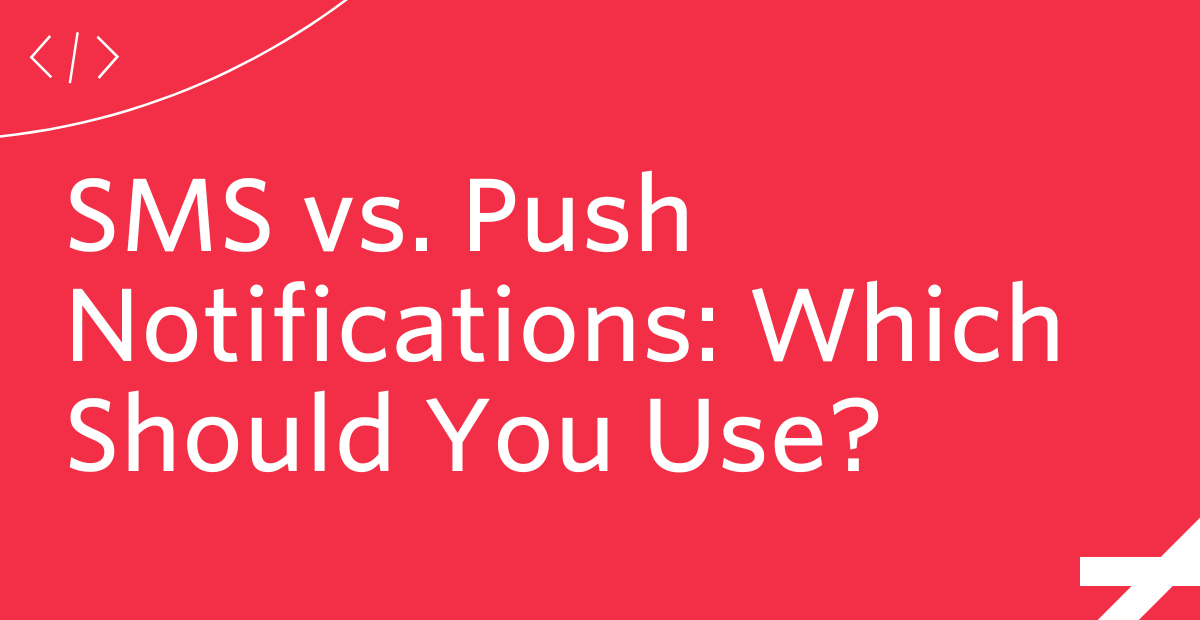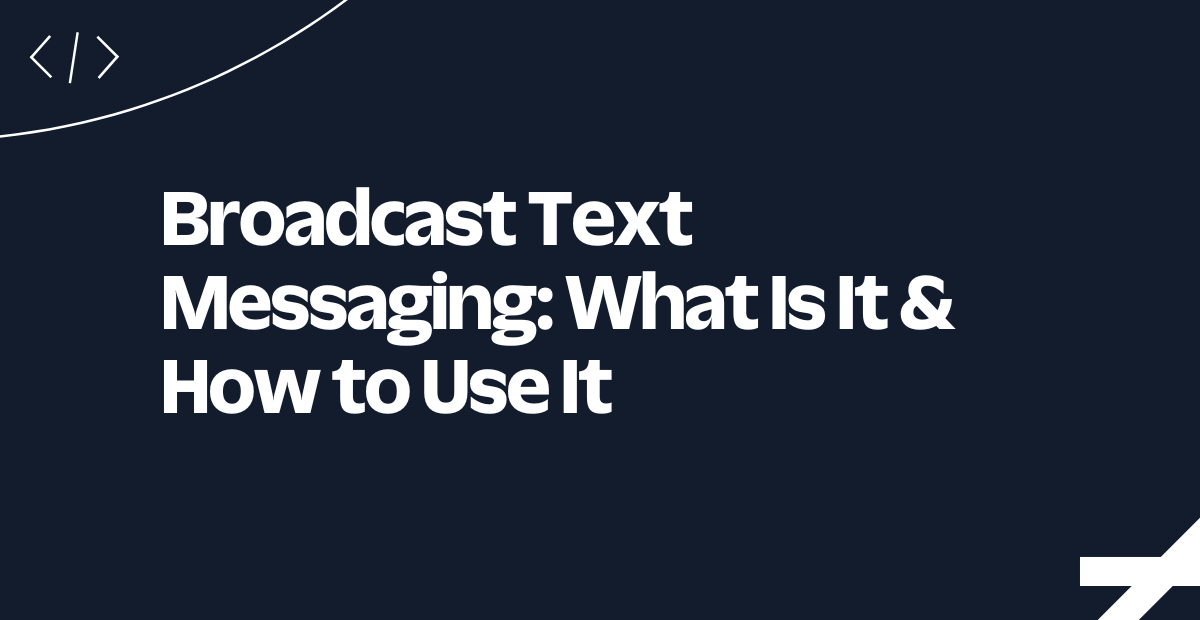Scaling your Messaging Strategy with the WhatsApp Business Platform: Part 1
Time to read:
For global businesses, interacting with customers on WhatsApp can help grow their trust and engagement with your brand, especially in regions where WhatsApp is a replacement for or a preferred alternative to SMS. However, as you are looking to grow your WhatsApp implementation, you might start running into challenges or roadblocks that you need to overcome to send WhatsApp messages at scale. As your WhatsApp use cases become more complex, learning how to scale with the WhatsApp Business Platform is critical to ensure you can achieve your messaging goals and deliver a positive customer experience.
Part 1: Sender Management & Capacity Limits
Increased complexity can look like higher messaging volumes or more senders or recipients. Additionally, scale can mean expanding your WhatsApp use cases, from account updates or notifications to promotional messages, conversational use cases like customer support, or OTP with Twilio Verify WhatsApp. With Twilio’s Messaging Services, you can send WhatsApp messages at scale by distributing high message volumes across multiple WhatsApp numbers. Additionally, Twilio’s guidance and best practices can help you scale with WhatsApp without hitting roadblocks due to number quality issues.
Sender Management
Messaging Services
Twilio Messaging Services allows businesses to create a sender pool with shared settings and features. WhatsApp numbers can be included in a sender pool along with other phone number types. Messaging Services enables customers to send messages at scale and also assists with sending messages across multiple countries. Messaging Services’ Advanced Opt-Out feature allows you to define a set of common opt-out keywords.
Creating trust with senders
Building trust with customers is critical to developing a strong relationship with them, and ensuring consumers trust the WhatsApp sender they are receiving messages from is a key step. For example, using local phone numbers helps build trust with recipients. A select number of global enterprises are designated as an official business account after an additional review by WhatsApp; these senders have a green checkmark next to their name in their profile and the header of the chat.
Number quality & best practices for maintaining quality
WhatsApp assigns each sender a quality rating based on how consumers have reacted to its messages. The sender quality is a factor in determining the capacity limit that WhatsApp puts in place for that sender. Though WhatsApp does not publish exactly how this rating is calculated, they do share that reactions like blocking a sender, or reporting a message as spam negatively impact a sender's quality rating and that the quality rating is weighted by recency. As a result, taking steps to mitigate the risk of recipients blocking or reporting your number is important to maintain high sender quality and, therefore, a higher messaging capacity.
You can avoid consumers hitting “Block” or “Report” by only sending messages to consumers who have opted in and ensuring the messages consumers receive are relevant to them. In addition, it is recommended you provide consumers an easy way to reply to future messaging, so they don't need to block your sender. Using Twilio's Advanced Opt Out, you can include a note in the message, such as "Reply STOP to unsubscribe", in any language you choose. One way to check whether users feel your messaging is relevant to them is by making it easy for them to respond to you; for example, you can use quick reply buttons to allow them to respond with a tap. This not only helps increase your conversational traffic but also helps you understand whether consumers are engaged with your messaging.
In August 2022, WhatsApp announced that message templates that users reported would no longer reduce the overall sender’s quality. Templates not meeting WhatsApp’s content requirements will be paused before being disabled.
Capacity limits & best practices for increasing messaging limits
WhatsApp implements a limit on the number of recipients you can start conversations with within a 24-hour period.
There are 5 tiers of capacity limits; new numbers start at a limit of 250 unique users per 24 hours (tier 0) until the Meta Business Manager is verified. Tier 0 was introduced in early 2023. At tier 1, you can start conversations with 1,000 users per 24 hours, 10,000 users per 24 hours at tier 2, 100,000 at tier 3, and an unlimited number at tier 4. These messaging limits only apply to business-initiated conversations and do not apply to user-initiated conversations. For example, if a user sends you a message and you respond, that user does not count towards the limit.
In order to move to a higher tier of capacity, you must ensure your number quality is not low, and your business needs to have been at your current messaging tier for at least 48 hours. Additionally, over a 7-day period, you must start conversations with half the number of customers as your current messaging limit. Previously, WhatsApp required businesses to start twice the number of conversations as their messaging limit, but they announced in August 2022 that this would be reduced. If these criteria are met, your messaging limits will be automatically increased; however, your limits can be decreased if your quality decreases because users are blocking or reporting messages. Because of these requirements, it will take a minimum of 7 days to move from tier 1 to tier 4; a typical timeframe is around 4-6 weeks.
When working to move up tiers, consider some of the following best practices. First, make sure you understand your current tier and number quality before you start. You can get this information in the Twilio Console. Understanding your current number quality is important because if it’s low, you need to work on improving the quality before trying to move up tiers. You can also distribute the messages you need to send to hit the next tier over the course of the week, so you have consistency over time. And finally, think about your audience when you are working to move up tiers. As we know, having recipients report or block a number will decrease its quality, consider sending relevant, personalized messages to those who you have communicated with in the past to mitigate the risk of being blocked or reported.
Managing WhatsApp sender quality is an important step in increasing capacity limits and scaling your WhatsApp use cases. In the second part of our guide to scaling with WhatsApp, learn about template management, opt-in requirements, and best practices for conversational messaging.
Guide for Scaling your Messaging Strategy with the WhatsApp Business Platform
Related Posts
Related Resources
Twilio Docs
From APIs to SDKs to sample apps
API reference documentation, SDKs, helper libraries, quickstarts, and tutorials for your language and platform.
Resource Center
The latest ebooks, industry reports, and webinars
Learn from customer engagement experts to improve your own communication.
Ahoy
Twilio's developer community hub
Best practices, code samples, and inspiration to build communications and digital engagement experiences.


